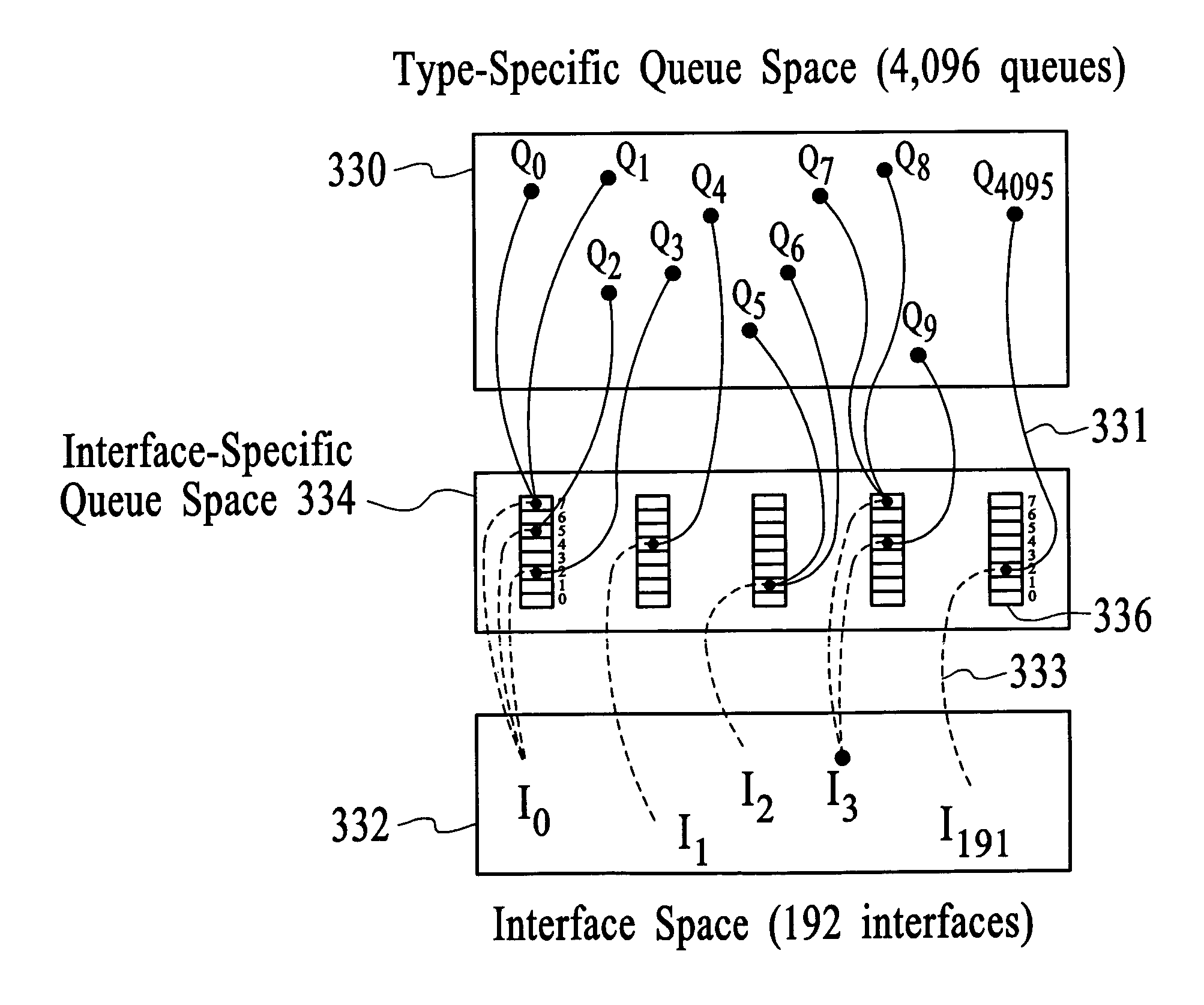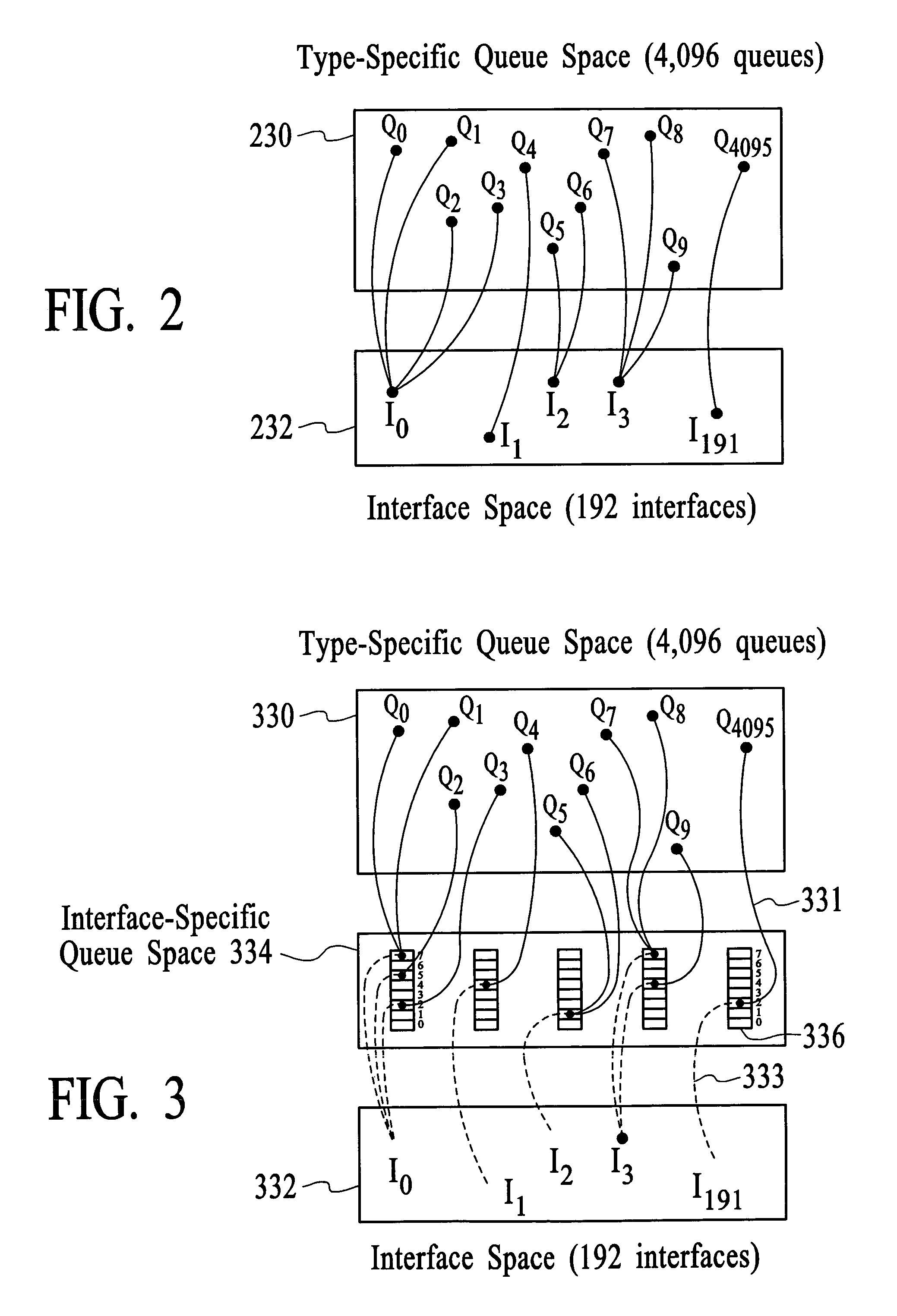Flexible multilevel output traffic control
a multi-level output and traffic control technology, applied in data switching networks, instruments, frequency-division multiplexes, etc., can solve the problems of inability to apply special rate shaping limitations to any one particular traffic type, cost and time-consuming custom hardware design for each particular interface combination, and achieve the effect of convenient adaptation
- Summary
- Abstract
- Description
- Claims
- Application Information
AI Technical Summary
Benefits of technology
Problems solved by technology
Method used
Image
Examples
Embodiment Construction
[0022]FIG. 1 depicts an embodiment of a system for controlling the flow of packets through at least one output interface. The system includes a classification engine 104, a queue management system 106, a packet buffer 108, a media dependent interface (MDI) 110, and a physical layer module (PHY) 112. In an embodiment, the system is implemented in a network node such as a switch or a router. For example, the switch or router may be a packet-based switch / router, such as an Ethernet-based switch / router, that forwards traffic using layer 2, layer 3, and layer 4 header information, where the layers are defined by the International Organization for Standardization (ISO) in the open system interconnect (OSI) model. The packet-based switch / router may include line cards that support network protocols such as Ethernet, ATM, Frame Relay, and / or SONET.
[0023]The classification engine 104 classifies incoming packets based on characteristics of each incoming packet. For example, the classification ...
PUM
 Login to View More
Login to View More Abstract
Description
Claims
Application Information
 Login to View More
Login to View More - R&D
- Intellectual Property
- Life Sciences
- Materials
- Tech Scout
- Unparalleled Data Quality
- Higher Quality Content
- 60% Fewer Hallucinations
Browse by: Latest US Patents, China's latest patents, Technical Efficacy Thesaurus, Application Domain, Technology Topic, Popular Technical Reports.
© 2025 PatSnap. All rights reserved.Legal|Privacy policy|Modern Slavery Act Transparency Statement|Sitemap|About US| Contact US: help@patsnap.com



